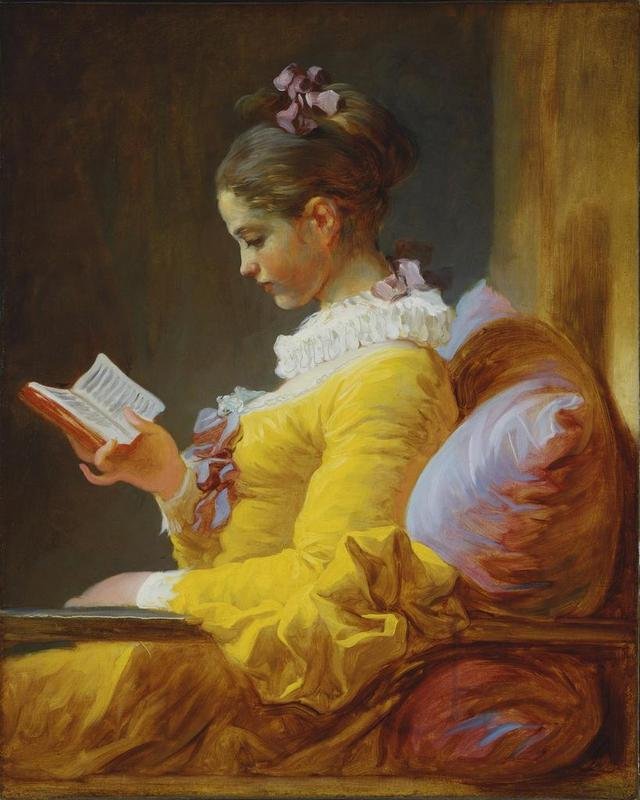How to Write Description For Your Story

Writing description is an essential to producing fiction. Many new writers find it difficult to write good description without boring the reader. They read all the books and listen to all the advice and the professionals are all universal in agreeing, keep it brief and blend it in.
It has been many moons ago since readers were interested in long passages of description. In this modern world of instant gratification, readers look for “the action”. They want to be entertained, not bored by long descriptive passages.
The trend is to blend description with action, but this process causes trouble for newer writers. When do I describe the setting? How do I describe the characters? And how much should I describe? Good questions. The answer isn’t simple.
There are no set rules, only guidelines writers should follow. The truth is each story is different, and the writer must play it by ear. With that said there are a few practices that make for good sense.
Example 1: Background and setting can be described quickly and effectively in an opening paragraph.
Granny Dan by Danielle Steel
The box arrived on a snowy afternoon two weeks before Christmas. It was neatly wrapped, tied with string, and was sitting on my doorstep when I came home with the children. We had stopped in the park on the way home, and I had sat on a bench, watching them, thinking of her again, as I almost constantly for the last week since her service. There was so much about her I had never known, so much I had only guessed at, so many mysteries to which only she held the key. My greatest regret was not asking her about her life when I had the chance, but just assuming it wasn’t important. She was old, after all, how important could it be? I thought I knew everything about her.
In the example above Danielle Steel skillfully sets the scene in December, and notice the way the author describes the box on the doorstep, creating mystery to allow the reader to ask what is in the box, establishing setting. Then Danielle goes on to describe the main character had stopped at the park with her kids, thus providing back ground information that main character is a woman that has kids. Then Danielle Steele installs more mystery, by telling the reader there was so much she didn’t about her. Who? We don’t know. All we know she was old, and the main character thought it wasn’t important, suggesting something in the box relates to the old woman who died and has something to do with her past. But notice how background is blended with setting.
Example 2: Back ground, setting, and character can be described quickly and effectively in an opening paragraph.
The Secret garden by Frances Hodgson Burnett
When Mary Lennox was sent to Misselthwaite Manor to live with her uncle everybody said she was the most disagreeable-looking child ever seen. It was true, too. She had a little thin face and a little thin body, thin light hair and a sour face. Her hair was yellow, and her face was yellow because she had been born in India and had always been ill in one way or another. Her father had held a position under the English Government and had always been busy and ill himself, and her mother had been a great beauty who cared only to go to parties and amuse herself with gay people.
In a hundred and ten words of the first paragraph the author establishes setting, back ground information, and character description. The author sets the setting in the first sentence - When Mary Lennox was sent to Misselthwaite Manor to live with her uncle. Then in the second, third, and fourth sentence we are given character description and background information why she looks the way she does - everybody said she was the most disagreeable-looking child ever seen. It was true, too. She had a little thin face and a little thin body, thin light hair and a sour face. Her hair was yellow, and her face was yellow because she had been born in India and had always been ill in one way or another. And the remaining sentences give more background information for the character.
Example 3: An accepted method is to describe character as soon as character is introduced.
Norby: Robot for Hire by Janet and Isaac Asimov
Norby’s small metal barrel of a body hovered above the floor, held up by his personal mini-antigrav. His telescoping legs were fully retracted, his double-palmed hands were busy making adjustments, and his rear pair of eyes were firmly shut.
Asimov introduces Norby in the second paragraph of the book. Take note the skill Asimov uses to describe the character by blending character description with action.In most works of fiction characters are describe as soon as the character is introduced, and in most cases blended in with action. This is done so the reader can create an image of a character in their mind and hold that image throughout the work of fiction.
Example 4: Description blended in with action
Norby: Robot For Hire by Janet and Isaac Asimov
Norby spun once on his axis, and all four of his eyes opened wide. The dome of his built-in hat slammed down as his half face retracted into his barrel. Then it popped up and his eyes glared at Jeff from under the brim of his hat.
Notice how Asimov describes Norby the robot by blending description in with action. Not only is the reader given enough information to allow the imagination to produce an image of Norby, but the reader isn’t slowed down or rhythm lost. This is a text book example of description done right. A search of books and magazines will supply writers with hundreds of examples. This technique is the accepted method by writers across all genres. Blend Description into action.

Summary
It will pay dividends if the writer becomes an expert in the technique of writing description. When writing description write it well. Use words that describe. “The four legged alien scrambled up the wall.” “The princess pranced across the dance floor.” If you must write long descriptive passages be good and know your stuff, and always blend description in with the story. Not to do so is a sign of an amateur.
Avoid the passive. Instead of: “There was a great wind from the north that tumbled over the trees.” Instead try: “The great north wind blew over trees.” Instead of saying: “We were forced to take shelter by the pounding of rain,” try something like: “A storm forced us to take shelter.”
All good description uses the sense. Not only do we see the soldiers scaling the castle walls, but we can hear the wind hollowing around the ramparts, smell the blood stains and body odor of the soldiers, feel the cold wind and blood rolling down their forearms, and taste the stale air.
It is good practice to write with nouns and verbs. Be cruel with adjectives and adverbs, in most cases they are a plague to your story, only use if it strengthens your story. In most cases you get better emphasis, description, and writing when you rely upon nouns and verbs.
New writers often get stuck on adverbs and become addicted, such as, he said angrily, she said, happily. Avoid such words. They are useless and provide no benefit. Let dialogue speak for itself. Let the man’s words be angry. Let the woman’s words sound happy. Most of the time he said or she said is all that is needed.
Writing with too many adjectives in description weakens the story. Adjectives should be used with great care.
Avoid qualifier words, such as, “He was really good at baseball.” “It was a truly emotional moment.” “It was rather odd to see him at the bar.” “He told the honest truth in the court room.” Such words give no value to your story. Avoid if possible, and only use if there is no other way around it. In most cases there is.
Remember, short descriptive passages usually are all that is required. The world is shrinking and in most cases a short description is all that is needed. Almost everyone in the world is connected through the internet and TV, and has become acquainted with almost everywhere and everything in the world. Readers want to know the setting in relation to the story and the characters, and that’s it. So here we are back to where we started. Description is essential to good story telling, but the word is out: keep it brief and blend it in.
Follow. Up-Vote. Resteem.
@shanedustin
@shanedustin

https://pixabay.com/en/fragonard-art-artistic-painting-91063/
Image Source:
https://pixabay.com/en/book-read-old-literature-drawing-1840910/
Image Source:
https://steemit.com/steemit/@dunja/steemit-logo-in-different-file-formats-png-jpg-ai-eps-svg-pdf
Congratulations @shanedustin! You have completed the following achievement on the Steem blockchain and have been rewarded with new badge(s) :
Click here to view your Board of Honor
If you no longer want to receive notifications, reply to this comment with the word
STOPColorful (excellent examples), astute, and well-written advice. Thank you, both for the content and the reading experience.
Thank You
I'm glad you took the time to read it. Means a lot.
Wonderful idea
I just Upvote you, kindly follow me and upvote
thanks.
Thanks For Reading!
Congratulations @shanedustin! You have completed the following achievement on the Steem blockchain and have been rewarded with new badge(s) :
Click here to view your Board of Honor
If you no longer want to receive notifications, reply to this comment with the word
STOPSome of us still love purple prose. :)
(But, I know most people are lazy, and I try to write to suit that.)
I know what you mean. I enjoy a lot of the old classic, like Moby-Dick (Call me Ishmael), and War of the Worlds with their longer passages, and very few of us like that style anymore. I don't mind it, because I'm an avid reader. And sometimes it drives me crazy that so many people are so lazy not want to read long passages, and I'm like has the world gotten in that big of a rush? But I guess so, people want to hurry up and get to the action so they can be entertained.
I'm like you I try write to suit that, but I try not deviate from who I am to much. I write what I write because I like writing it. I think it is important, to write for ourselves first, of course I may be wrong.
Thanks For The Comment!
Oh, I agree entirely -- "I try write to suit that, but I try not deviate from who I am to much. I write what I write because I like writing it. I think it is important, to write for ourselves first" -- :)
So many of my favourite books have long, flowery passages filled with intricate descriptions that web and weave you into the story. They might not jump into the action immediately, but you're following along, you're there, and then when everything starts happening, you feel a lot more. Then I read the GoodReads reviews of them, and all the negative ones? Surprise, surprise! "Too much purple prose." "Takes forever to get to the point." "Fell asleep before any action happened." "Ugh, too many big words. I don't want to read a dictionary while I'm reading." "Filled with historical trivia I could care less about." ~ and I'm just... everything you hate is what I love!
:D
Congratulations @shanedustin! You have completed the following achievement on the Steem blockchain and have been rewarded with new badge(s) :
Click here to view your Board of Honor
If you no longer want to receive notifications, reply to this comment with the word
STOPCongratulations @shanedustin! You have completed the following achievement on the Steem blockchain and have been rewarded with new badge(s) :
Click here to view your Board of Honor
If you no longer want to receive notifications, reply to this comment with the word
STOP